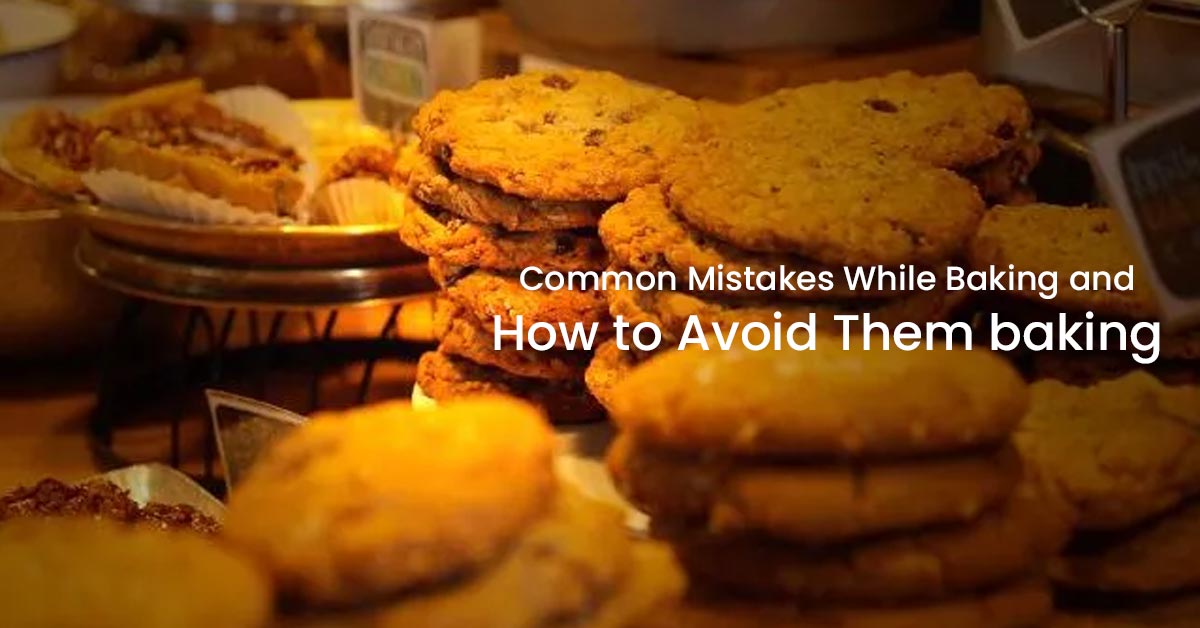Baking is both an art and a science, requiring precision, patience, and practice. Even the most experienced bakers can make mistakes that result in less-than-perfect treats. However, by understanding common pitfalls and how to avoid them, you can enhance your baking skills and consistently achieve delicious results. This blog by our baking institute in Chennai explores the most common mistakes made in baking and offers practical tips to help you avoid them.
1. Not Reading the Recipe Thoroughly
One of the most common mistakes is not reading the recipe all the way through before starting. This oversight can lead to missed steps or misunderstood instructions.
How to Avoid It:
- Read the Entire Recipe: Before you begin, read the entire recipe carefully. Pay attention to the order of steps and any specific techniques required.
- Prepare Ingredients and Tools: Gather all ingredients and necessary tools beforehand. This will prevent last-minute scrambling and ensure you have everything you need.
2. Incorrect Measurement of Ingredients
Accurate measurement of ingredients is crucial in baking. Even a slight deviation can alter the texture, taste, and structure of your baked goods.
How to Avoid It:
- The Proper Measuring Tools: Use dry measuring cups for dry ingredients and liquid measuring cups for liquids. For precise measurements, especially with flour, use a kitchen scale.
- Ingredients: For dry ingredients like flour and sugar, use a knife or spatula to level off the excess after filling the measuring cup.
3. Substituting Ingredients Improperly
While it may be tempting to substitute ingredients based on availability or preference, not all substitutions work well in baking.
How to Avoid It:
- Understand the Role of Ingredients: Ingredients in a recipe often serve specific purposes, such as providing structure, moisture, or leavening. Research substitutions carefully and consider how they might affect the final product.
- Stick to the Recipe: When in doubt, follow the recipe exactly, especially for critical ingredients like flour, sugar, eggs, and leaveners.
4. Overmixing or Undermixing the Batter
The mixing process can significantly impact the texture of baked goods. Overmixing can lead to tough, dense textures, while undermixing can result in uneven baking.
How to Avoid It:
- Mix Just Until Combined: Follow the recipe’s instructions for mixing. For most recipes, especially cakes and cookies, mix the batter until just combined to avoid developing too much gluten.
- Be Gentle with Add-ins: When adding ingredients like nuts, chocolate chips, or fruits, fold them in gently to avoid overmixing.
5. Incorrect Oven Temperature
Baking at the wrong temperature can cause baked goods to rise too quickly, become overly dry, or fail to set properly. Our bakery classes in Chennai teaches students about the different temperatures and how to use them properly for each recipes.
How to Avoid It:
- Use an Oven Thermometer: Oven temperatures can vary, even in well-maintained ovens. Use an oven thermometer to ensure the correct temperature is achieved.
- Preheat the Oven: Always preheat the oven to the temperature specified in the recipe before placing your baked goods inside.
6. Opening the Oven Door Too Often
Constantly opening the oven door to check on your baking can cause temperature fluctuations, affecting the final product.
How to Avoid It:
- Oven Light: Instead of opening the door, use the oven’s light to check on your baked goods. If you must open the door, do so quickly and gently to minimize heat loss.
- Trust the Timer: Set a timer according to the recipe’s instructions and resist the urge to check too often.
7. Not Preparing the Pan Properly
Failing to properly prepare the baking pan can result in baked goods sticking, making them difficult to remove and ruining their appearance.
How to Avoid It:
- Follow Pan Preparation Instructions: If the recipe calls for greasing and flouring the pan, do so thoroughly. For delicate cakes, consider using parchment paper as an extra precaution.
- Choose the Right Pan: The type of pan can affect baking times and results. Use the pan size and type specified in the recipe.
8. Ignoring Baking Times and Visual Cues
Baking times are often provided as guidelines and can vary depending on your oven, altitude, and other factors.
How to Avoid It:
- Check for Doneness: Use visual cues and tools like toothpicks or cake testers to check for doneness. For cakes, a toothpick inserted into the center should come out clean or with a few crumbs.
- Adjust Baking Time if Necessary: If your baked goods aren’t done at the recommended time, give them a few more minutes and check again. Be cautious not to overbake.
9. Not Allowing Enough Cooling Time
Cooling is an essential step that allows baked goods to set and develop their final texture and flavor.
How to Avoid It:
- Follow Cooling Instructions: Allow baked goods to cool in the pan for the recommended time before transferring them to a cooling rack. This prevents sticking and breaking.
- Be Patient: Avoid cutting into baked goods too soon. For example, cookies need time to firm up, and cakes need time to stabilize.
10. Using Expired Ingredients
Baking ingredients, especially leaveners like baking powder and baking soda, lose their effectiveness over time.
How to Avoid It:
- Check Expiration Dates: Regularly check the expiration dates of your ingredients and replace them as needed.
- Store Ingredients Properly: Keep ingredients like flour, sugar, and leaveners in airtight containers to maintain freshness.
Baking is a rewarding activity that can produce delicious treats, but it requires attention to detail and adherence to specific techniques. By avoiding these common mistakes and following the tips provided through our baking courses in Chennai, you can improve your baking skills and enjoy consistently delightful results. Remember, practice makes perfect, and every baking experience is an opportunity to learn and grow. Happy baking!


